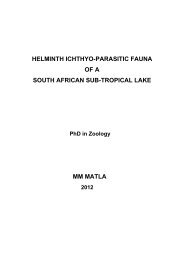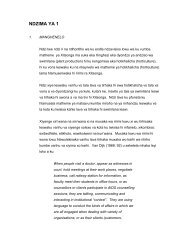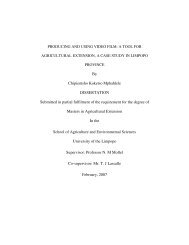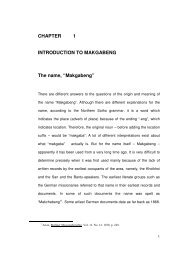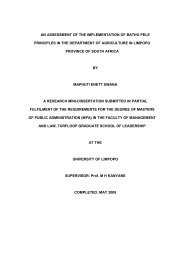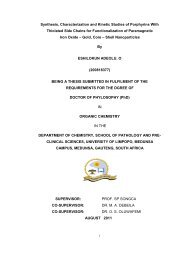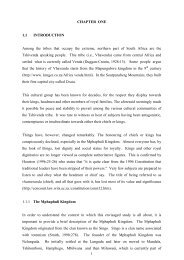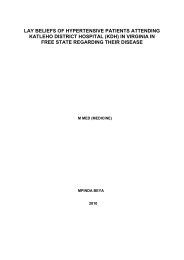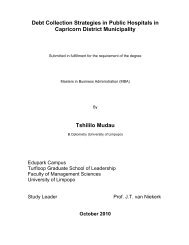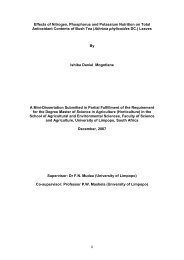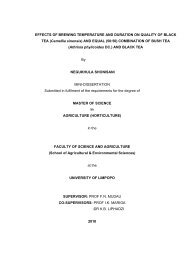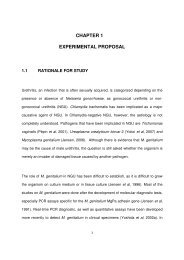Mmushi T MSc (Microbiology).pdf
Mmushi T MSc (Microbiology).pdf
Mmushi T MSc (Microbiology).pdf
Create successful ePaper yourself
Turn your PDF publications into a flip-book with our unique Google optimized e-Paper software.
from East Coast Fever, and people take it as a cure for parasitic worm infections in the<br />
form of a decoction (De Boera et al., 2005),anthelmintic action (Teichler, 1935) and<br />
antiplasmodial activity (Nundkumar and Ojewole, 2002)<br />
Fig. 1.17. Vangueria infausta subsp. infausta.<br />
1.6.13. Warburgia salutaris<br />
Warburgia salutaris belongs to the family Canellaceae with a common name pepperbark<br />
tree. This is a tropical forest tree that extends southwards as far as KwaZulu-Natal,<br />
eastern and northern Gauteng and across Swaziland. Its growth habitat is forests and<br />
kloofs. This is an evergreen, slender tree that grows from 5 to 10 m tall. The dark green,<br />
glossy leaves are paler green below with entire margins, and are simple, alternately<br />
arranged, elliptic to lanceolate. The midrib is slightly off-centre with the tapering apex<br />
and base. The leaves have a bitter, burning, aromatic taste. The stem is covered by a<br />
rich brown bark that is also bitter and peppery. Medicinally, the pepper-like, bitter stems<br />
and root bark are used as a remedy for common colds (Hutchings et al., 1996). Dried<br />
and ground, these make a snuff used to clear the sinuses. Taken orally these are<br />
believed to cure spots in the lungs, sores in the mouth and as a natural antibiotic to treat<br />
chest infections (Van Wyk and Gericke, 2000).<br />
29



